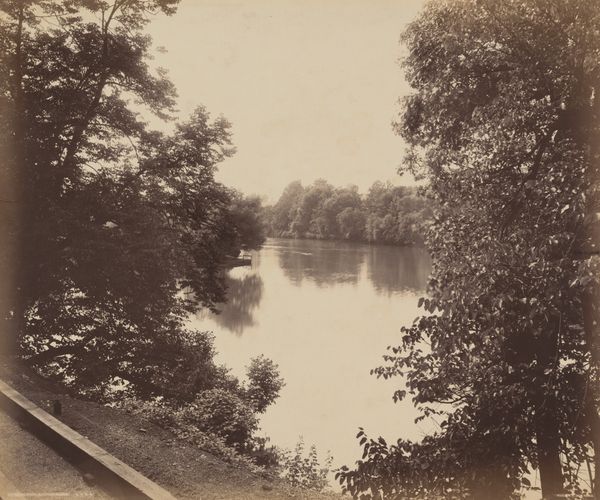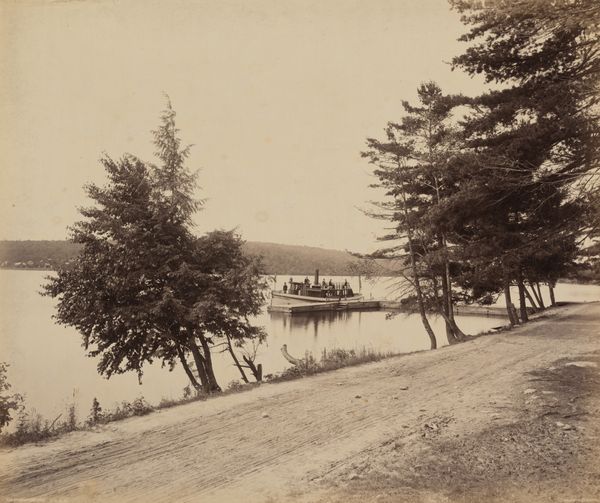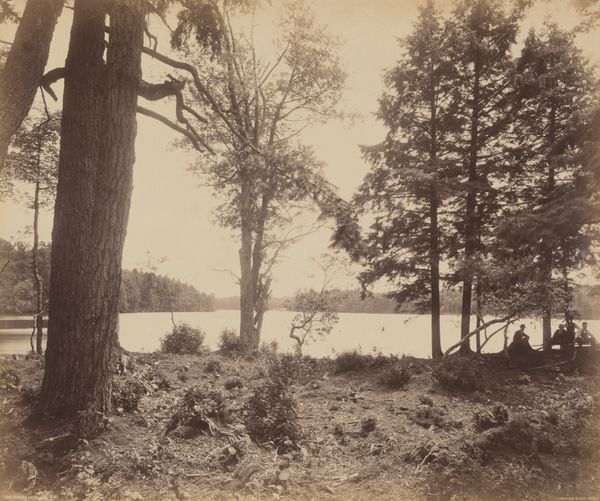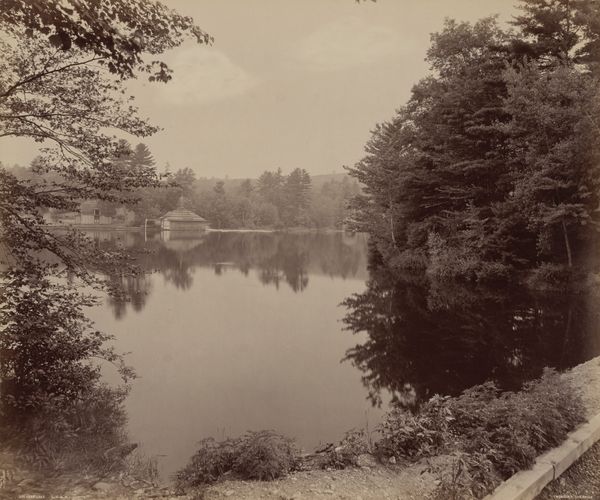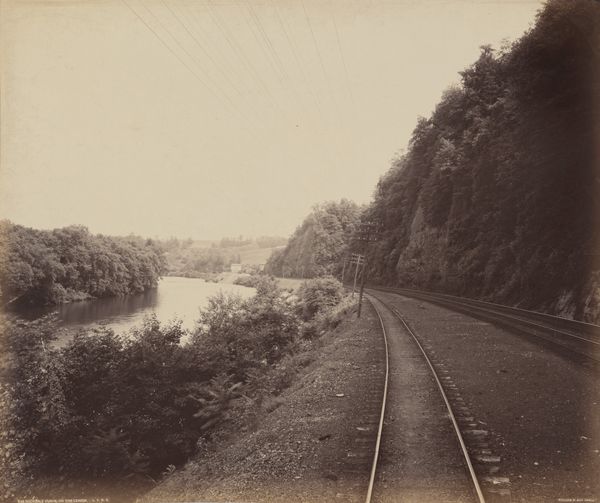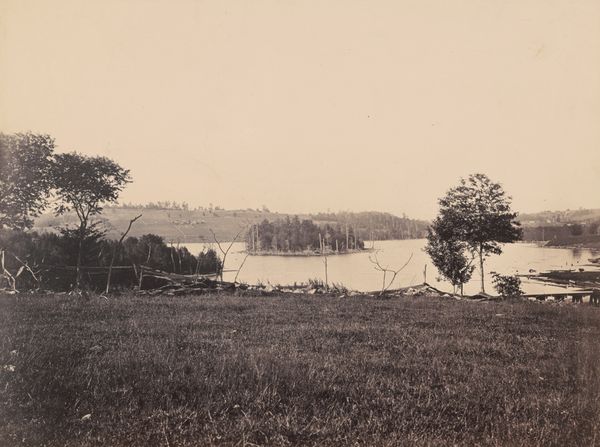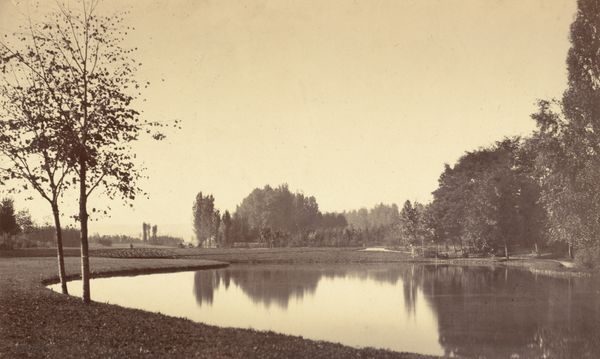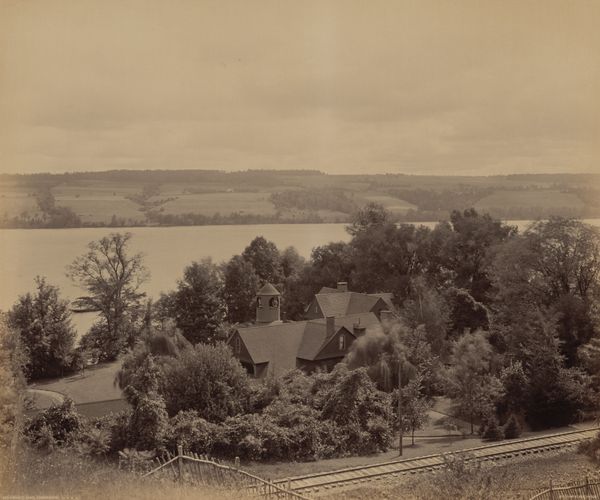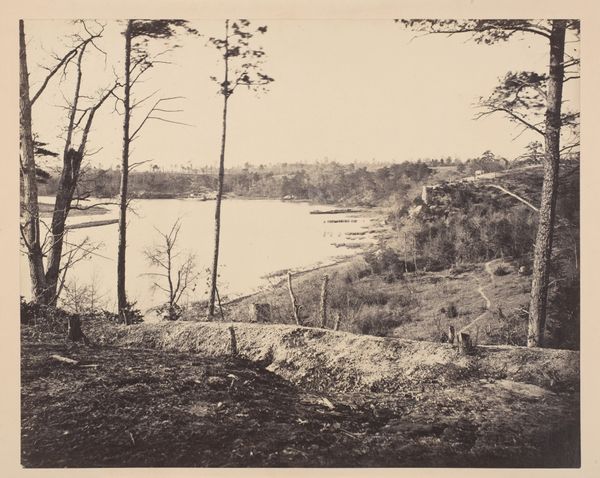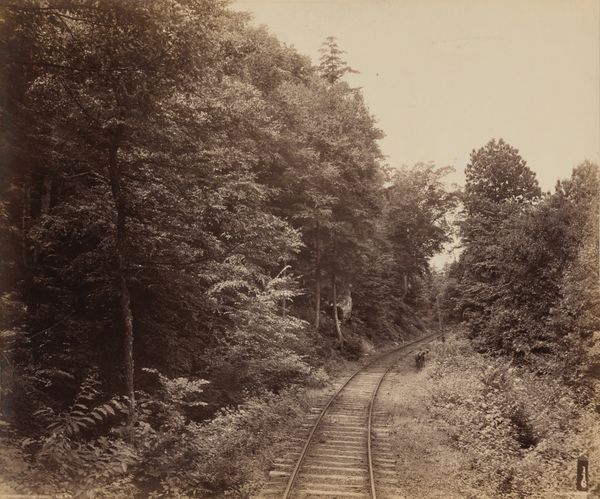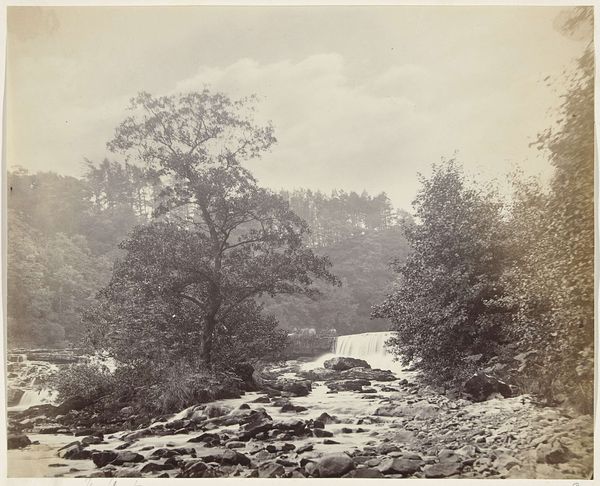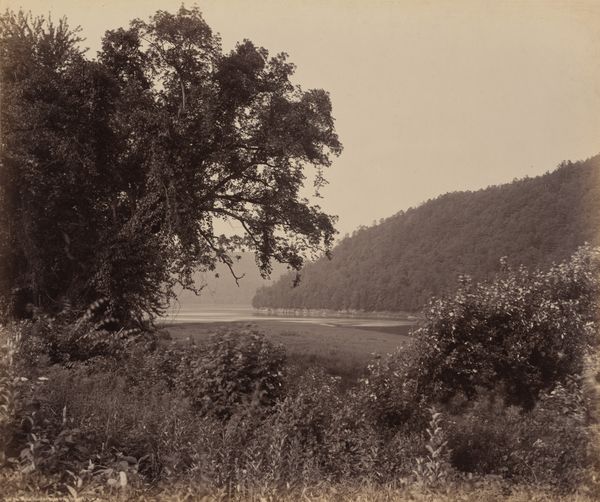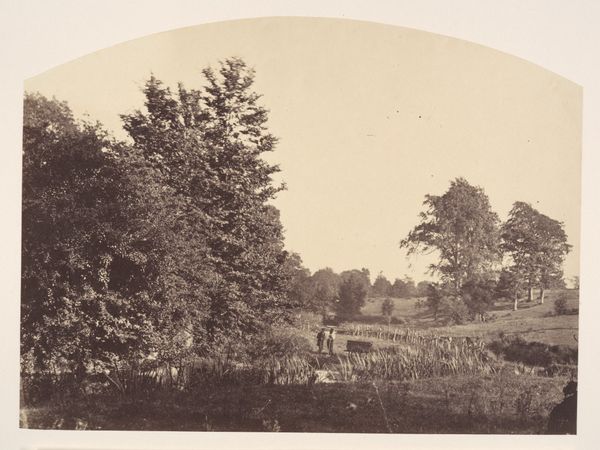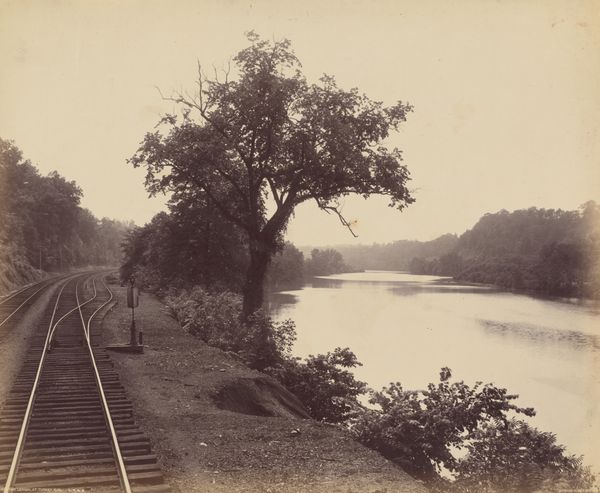
photography, gelatin-silver-print
#
pictorialism
#
landscape
#
photography
#
gelatin-silver-print
#
monochrome photography
#
19th century
#
realism
Dimensions: image: 43.7 × 52.1 cm (17 3/16 × 20 1/2 in.) mount: 49.7 × 59.1 cm (19 9/16 × 23 1/4 in.)
Copyright: National Gallery of Art: CC0 1.0
Curator: Immediately, I'm drawn to the melancholic mood. The scene, captured in this gelatin-silver print, is bathed in sepia tones and feels somewhat desolate. Editor: That's a perceptive entry point. We are looking at "Beechwood Lake," a photograph attributed to William H. Rau, circa 1895. What resonates, for me, is the inherent tension embedded in its depiction of nature juxtaposed against the encroachment of industrial advancement. Curator: Yes, precisely! Look at those railway tracks cutting right through the landscape. They signify progress, sure, but also disruption and a potential loss of the natural environment. What do they represent within the colonial project of land usage, displacement, and resource extraction? This disruption manifests in what looks like the foreground—an entangled array of felled trees in apparent disarray as tracks are pushed through the space, all creating a narrative about human dominance over the land and its original inhabitants. Editor: The placement of those tracks creates a strong diagonal that pushes back towards the distant treeline on the other side of the lake, which is barely visible through what looks like the carefully constructed arrangement of organic growth along the border of the frame. And consider the tonality: Rau plays with subtle variations in light to achieve depth and atmosphere—note the softness of the water contrasting the textural complexity of the undergrowth. Curator: It invites contemplation about the effects of modernization during that era—about its effects on the ecosystem and potentially Indigenous populations’ land rights, which is so pertinent when thinking of 19th-century landscape depictions that served to enable manifest destiny. It prompts consideration for how natural landscapes, even when captured with aesthetic intent, are almost always politically charged spaces—their meaning informed and defined by intersecting socioeconomic, cultural, and historical considerations. Editor: An interesting viewpoint that complements the intrinsic aesthetics. Rau captured something more than scenery; there are symbolic juxtapositions to examine. What is so impactful is Rau’s ability to distill all this information in a composition marked by quiet reflection—revealing beauty amid disruption. Curator: Agreed. It highlights the complex, multi-layered dialogue we can have when observing art and understanding how form and content intersect to communicate essential truths. Editor: Indeed—a fruitful exchange spurred by close visual analysis that bridges artistic intention and historical context.
Comments
No comments
Be the first to comment and join the conversation on the ultimate creative platform.
